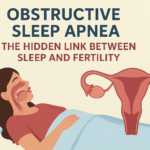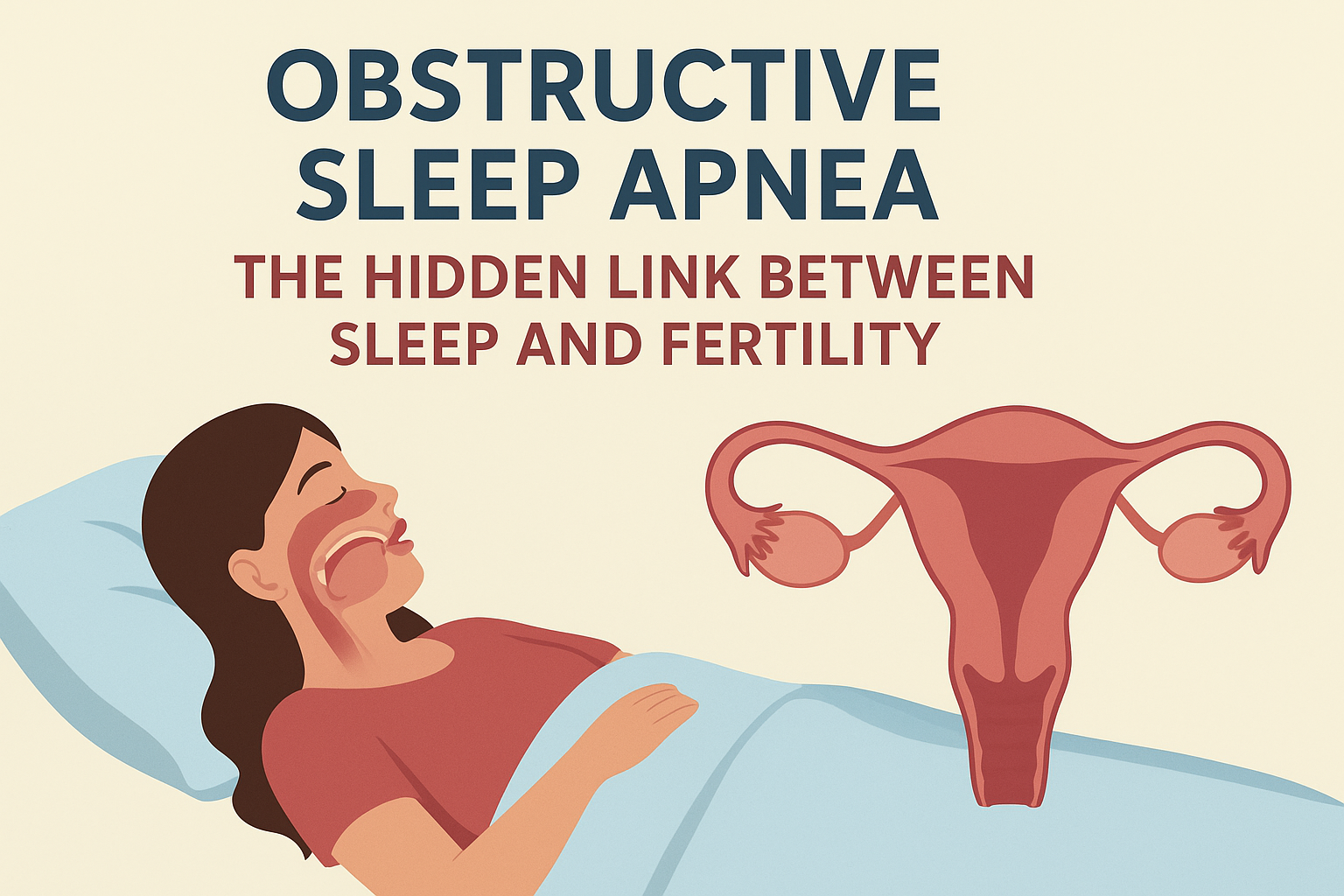Written by Aisha, Reviewed by Dr. Manvir Bhatia-10/10/2025
Infertility has become a growing global concern, with more couples than ever seeking medical help and turning to assisted reproductive techniques like IVF (In-Vitro Fertilization). But what’s driving this rise?
While lifestyle changes, hormonal imbalances, obesity, and stress are well-known culprits, a lesser-known factor is gaining attention — sleep health. Recent research reveals that one sleep disorder, Obstructive Sleep Apnea (OSA), may be an overlooked yet significant contributor to infertility, especially in women.
What is Fertility?
Fertility refers to the natural ability to conceive. Infertility is defined as the inability to achieve pregnancy after one year of regular, unprotected intercourse. It affects millions of couples worldwide — and the numbers are steadily climbing due to multiple underlying causes.
Rising Infertility and the Role of Sleep
While IVF and other fertility treatments are becoming more common, addressing the root causes remains vital. Poor sleep quality and disorders like OSA can silently impact reproductive health. Unfortunately, while most women undergo extensive hormonal and metabolic testing, sleep disorders often remain unassessed.
How Does OSA Affect Fertility?
OSA is marked by repeated airway blockages during sleep, leading to:
- Intermittent hypoxia (low oxygen levels)
- Sleep fragmentation (poor, disrupted sleep)
These disturbances can trigger hormonal imbalances, inflammation, and metabolic changes — all of which can interfere with reproductive health.
Key Hormones in Female Fertility and How They’re Affected
- Follicle-Stimulating Hormone (FSH):
- Normal role: Helps ovarian follicles mature.
- Disruption: Low FSH prevents ovulation; high FSH may signal poor ovarian reserve.
- Luteinizing Hormone (LH):
- Normal role: Triggers ovulation.
- Disruption: Too low → no egg release; too high (as in PCOS) → poor egg quality.
- Estrogen (E2):
- Normal role: Prepares the uterus for implantation.
- Disruption: Low estrogen → thin uterine lining; high estrogen → irregular cycles.
- Progesterone:
- Normal role: Supports early pregnancy.
- Disruption: Low levels → implantation failure or early miscarriage.
- Testosterone (Androgens):
- Normal role: Supports follicle development in small amounts.
- Disruption: Excess levels (as in PCOS) interfere with ovulation.
- Prolactin:
- Normal role: Regulates lactation.
- Disruption: High levels suppress ovulation.
- Thyroid Hormones (T3, T4, TSH):
- Normal role: Maintain metabolism and reproductive balance.
- Disruption: Hypothyroidism and hyperthyroidism both cause menstrual and ovulatory irregularities.
The Mechanism Behind Infertility
Fertility works like a finely tuned orchestra — and a disturbance at any level can throw the entire system off balance:
- Hypothalamus dysfunction: Affects GnRH → alters FSH/LH secretion.
- Pituitary gland issues: Disrupt FSH, LH, or prolactin → prevents ovulation.
- Ovarian dysfunction: Poor egg quality, no ovulation, or hormonal imbalance.
- End-organ effects: Thin uterine lining, poor implantation, early pregnancy loss.
Hence, a comprehensive evaluation must include sleep health along with hormonal and metabolic assessments.
A Real-World Example
A 36-year-old woman, married for nine years, visited our center for infertility evaluation. Despite normal hormone results, she reported loud snoring for several years. A sleep study diagnosed moderate OSA — a crucial but previously overlooked cause.
This case underscores how undiagnosed OSA can silently hinder conception
Scientific Evidence Linking OSA and Infertility
In Women:
A large 14-year nationwide study found that women with OSA had 2.1 times higher odds of infertility compared to those without OSA. (Source: PLOS)
In Men:
Men with OSA were shown to have a 2.7-fold increased risk of infertility. Prolonged OSA exposure led to decreased sperm quality and hormonal imbalance. (Sources: MDPI, JAMA Network, Oxford Academic)
Identifying OSA in Women with Infertility
OSA is often missed in women, as symptoms can be subtle. Common warning signs include:
- Loud snoring
- Daytime fatigue or sleepiness
- Morning headaches
- Unrefreshing sleep
- Weight gain or metabolic issues
Can Treating OSA Improve Fertility?
Encouragingly, yes. Treating OSA can positively impact hormonal balance and reproductive health.
- CPAP therapy improves oxygenation, reduces stress hormones, and normalizes reproductive hormones.
- Weight management and lifestyle changes enhance both sleep and fertility outcomes.
- In select cases, surgical treatment for OSA may also help.
Conclusion
Infertility isn’t always driven by visible hormonal imbalances — sometimes, the missing piece lies in poor sleep health. OSA disrupts hormones, increases inflammation, and worsens conditions like PCOS, collectively lowering fertility potential.
By identifying and treating OSA, many women can improve their fertility naturally and even enhance the success of fertility treatments like IVF.
Bottom Line:
If you or someone you know has been struggling with infertility despite normal hormonal evaluations, it might be time to consider a sleep assessment. Better sleep could be the missing link to better fertility.











